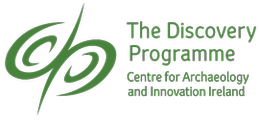The Western Stone Forts Project: Excavations at Dún Aonghasa and Dún Eoghanachta
Claire Cotter, The Discovery Programme, 2013. https://doi.org/10.5284/1017457. How to cite using this DOI
Data copyright © Claire Cotter unless otherwise stated
This work is licensed under the ADS Terms of Use and Access.
Primary contact
Dr
Anthony
Corns
The Discovery Programme
63 Merrion Square
Dublin
D2
Ireland
Tel: +353 1 639 3713
Resource identifiers
- ADS Collection: 1188
- DOI:https://doi.org/10.5284/1017457
- How to cite using this DOI
Overview
Volume 3
The Western Stone Forts Project: Excavations at Dún Aonghasa and Dún Eoghanchta, Finds Catalogues, Raw Data Tables and Ancillary Studies, Volume 3 by Claire Cotter (2013).

Volume 3 has three main parts:
Parts 1 & 2 contain data relevant to Dún Aonghasa. Part 1 (Appendix 1 - Appendix 4) contains tabulated data, mainly finds catalogues, raw data for scientific analyses and raw data associated with the analysis of the animal bone assemblage. It includes a small number of figures. Part 2 (Appendix 5 - Appendix 13) is made up a series of articles or ancillary studies on aspects of the finds assemblage, metalworking / metal finds or on other subjects e.g. late prehistoric hillforts. These studies were carried out as part of the post-excavation work or as spin-offs from it but were not included in the published volumes. Part 2 is preceded by a short preface.
Part 3 contains data relevant to Dún Eoghanachta. It contains two appendices: Appendix 14 is made up of finds catalogues and Appendix 15 contains the raw data associated with the analysis of the animal bone assemblage.
The archive
The archive is available as a single PDF document (Volume 3), a number of extracted individual PDF documents, context information and a finds database (the latter relates to Dún Aonghasa only). Vol. 3 contains all the data except the contexts tables and the finds database. The volume is presented more or less in book format and has a full contents list including lists of figures and tables. This is the best version for browsing through the overall data. For quick access to specific information (finds catalogues or animal bone data) use the individual PDF documents.
Context information for Dún Aonghasa and Dún Eoghanachta
This can be found in two separate downloadable PDF's. Contexts Dún Aonghasa and Contexts Dún Eoghanachta.
Finds Database for Dún Aonghasa
This is arranged in numerical order using the individual find no. (1-3081, 4000-4019) with National Museum of Ireland prefix (92E102). Fields include the class of material that the object is made of (general e.g. metal, clay etc.), the specific class (e.g. bronze, clay mould etc.), find type (what the object is), type (this may refer to subtypes, e.g. Type 1 needles, or to broken parts of single identifiable objects, e.g. axehead no. 1, no. 2 etc, feature no. (same as context number) and dimensions (length, width, thickness).





